Making macarons at home is a great way to whip up some of the taste and elegance of Paris in your own kitchen. Many recipes for the French confection call for cream of tartar, but do you really need it? We've scoured culinary manuals and recipe books to answer that question for you.
It is very possible to make macarons without cream of tartar! In fact, traditional macarons are made without it, but cream of tartar does help stabilize the meringue. You can leave out the cream of tartar altogether or substitute it with another acidic ingredient, such as lemon juice or vinegar.
Now that we've got that covered, let's take a closer look at what to do if you want to substitute or omit cream of tartar from your own macarons. We'll also cover the basic macaron-making technique and see how you can whip up these delicacies if you don't have almond flour or eggs too. Read on to get the full story on these confection conundrums!
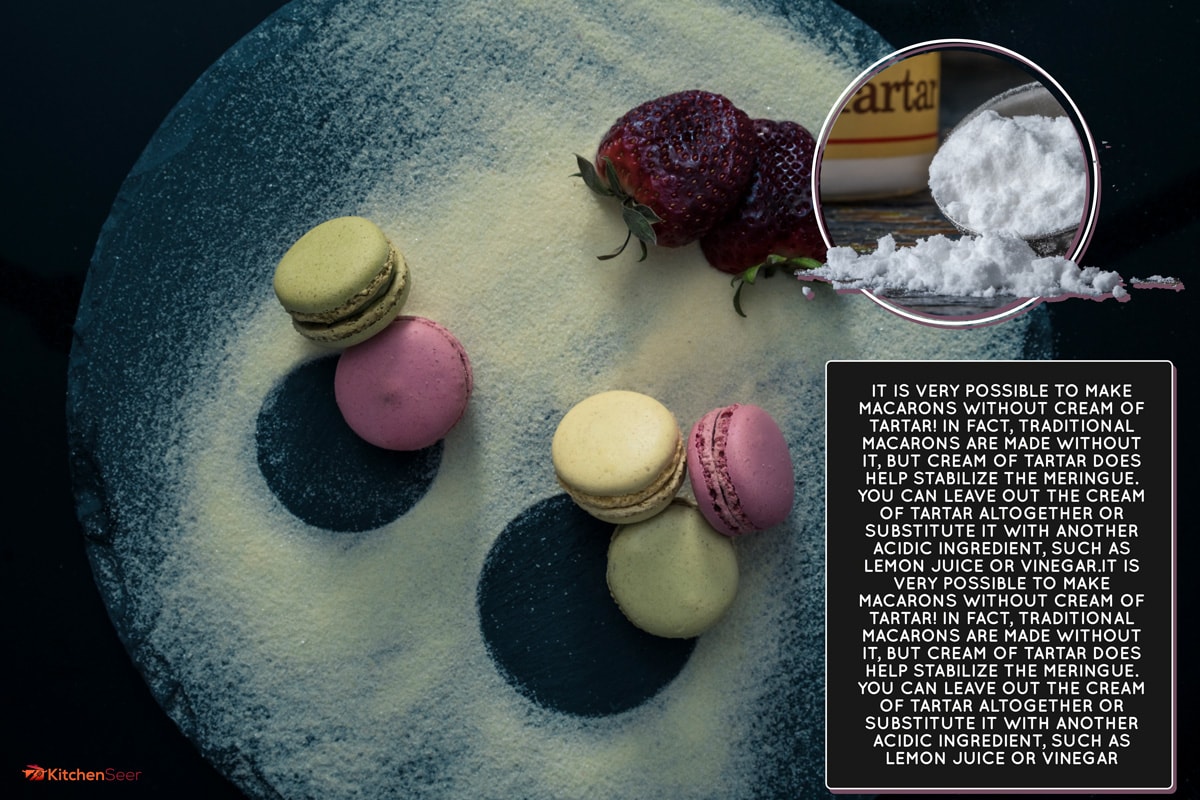
Do you need cream of tartar to make macarons?
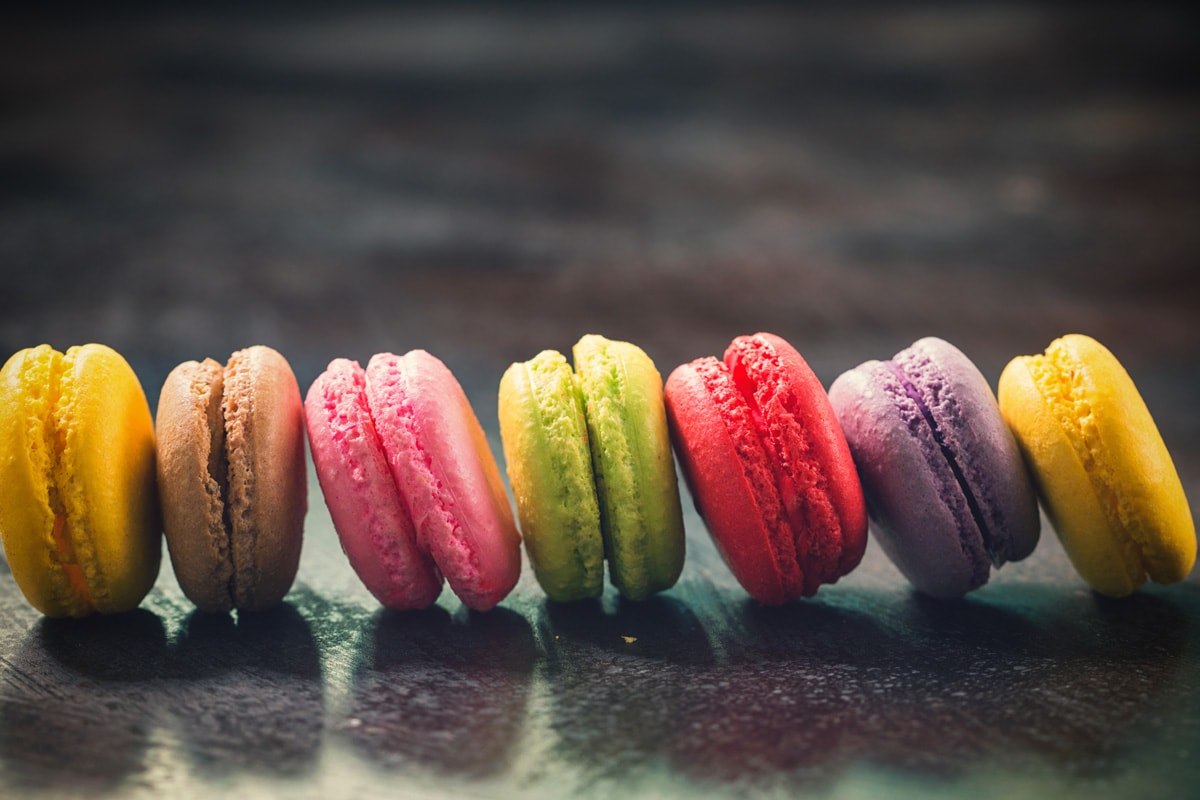
It is entirely possible to make macarons without cream of tartar. Traditional macaron recipes don't call for any cream of tartar at all. So if you don't have this unique ingredient handy, don't worry; you'll still be able to make these tasty confections.
Macarons have a long, complex, and controversial history. The main thing to know for now is that people have been making modern macarons longer than people have been using cream of tartar to make meringue. So if you follow a traditional method, you won't need cream of tartar at all.
What happens if you leave cream of tartar out of macarons?
Since you don't need cream of tartar to make macarons, why do so many recipes call for it? There's a simple reason. Macarons are easy to mess up, and cream of tartar provides a little more insurance than you would have otherwise.
This is because macarons are made with meringue: whipped egg whites. As you whip egg whites, proteins form a net that captures air bubbles and separates the air from the water in the meringue. Adding cream of tartar makes it easier for proteins to denature and form this net, resulting in a more stable meringue.
A more stable meringue means it will be easier for you to make perfectly shaped macarons. So, while you don't need cream of tartar to make a macaron or any other meringue-based dish, it can certainly help.
What can you use instead of cream of tartar in macarons?
If you want the helping hand that cream of tartar offers but don't have any handy, there are alternatives you can use. The most common are lemon juice and white vinegar.
This is because the benefits of cream of tartar come from its acidic properties, so another acidic ingredient can get the job done just as well. And don't worry about the taste. You only need a very small amount, just twice as much as the cream of tartar by volume or 1 teaspoon for 6 egg whites.
How to make macarons with and without cream of tartar
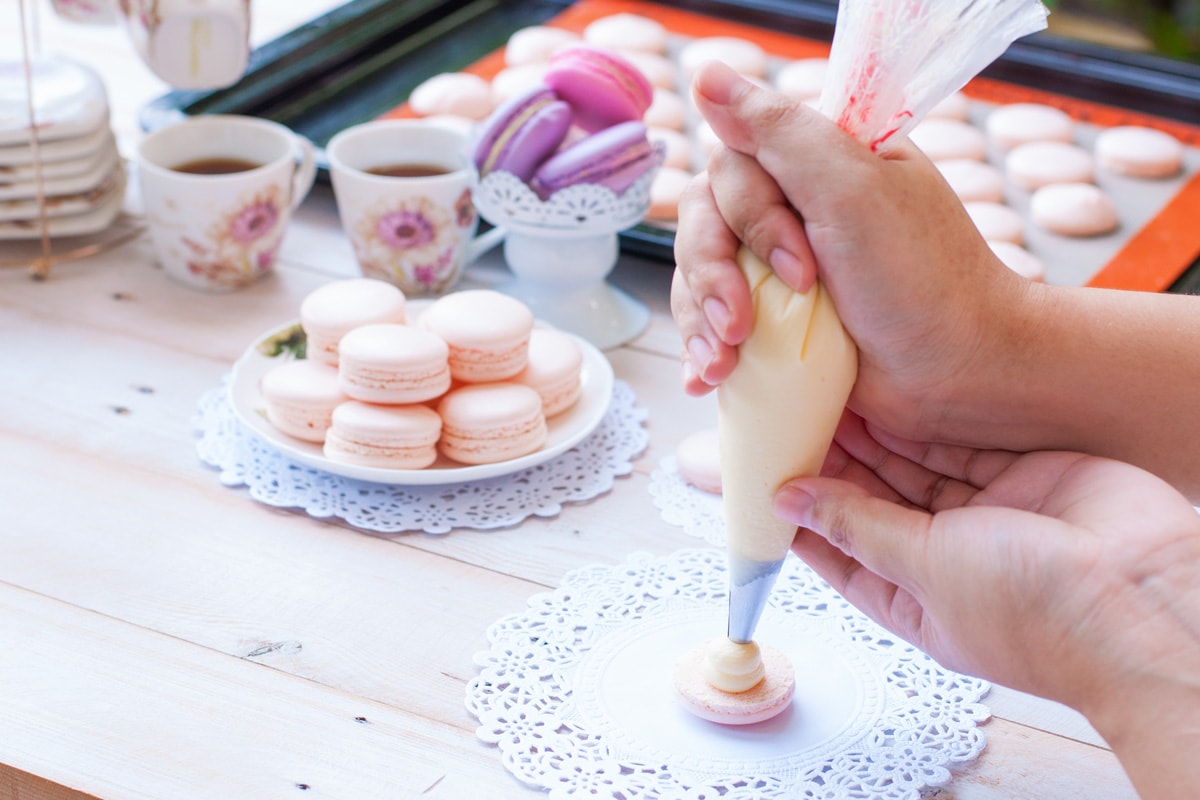
Whether you're using cream of tartar, a substitute, or no stabilizer at all, the process of making macarons will look the same. It takes time and patience to get it right, but once you do, you'll be in for a tasty treat!
Modern macarons are made of two cookies with a filling, but what really makes them macarons are the cookies. The method below comes from a recipe from Ladurée, one of the original makers of macarons parisiens. It was published in their book as well as in Harper's Bazaar.
Here's how to make a batch of 50 cookies for 25 macarons:
1. Combine almond flour and sugar
Add 275 grams of almond flour and 250 grams of confectioners sugar to a food processor. Blitz them together until they form a fine powder. Next, sift this powder to remove any remaining clumps.
2. Make the meringue
Separate 6 egg whites and save the yolks for another recipe. Add the egg whites to a very clean bowl. If using cream of tartar, lemon juice, or white vinegar, add it now (1 half teaspoon of cream of tartar or 1 teaspoon of lemon juice/ white vinegar). You'll also want to have 210 grams of castor sugar ready to go.
Start whipping the egg whites with a standing mixer or electric beaters (you can whisk by hand, but it will take a lot more time and energy).
Once the egg whites are foamy, add in a third of the castor sugar, and start whisking again. After a minute, add in half of the remaining sugar, then whisk for another minute. Then, add the rest of the sugar and whisk until it forms stiff, glossy peaks. If you are going to add food coloring to your cookies, do so now.
The video below can help you identify when your meringue is perfectly whipped:
https://youtube.com/shorts/Ia854-zcgQg?feature=share
3. Combine the meringue and the almond mixture
With the meringue ready, you'll want to combine it with the almond-sugar mixture. Fold in the almond mixture into the meringue with a spatula, adding it in two or three stages.
Properly folding in the mixture helps maintain air bubbles in the meringue while adding the almond mixture. Watch the video below for a demonstration of the folding technique:
Once the almond mixture and the meringue are combined, whisk up half of an egg white in another bowl until it is frothy. Then fold it into the meringue batter to soften and moisten it.
4. Preheat your oven and pipe your macarons
Set your oven to 300º Fahrenheit. As the oven preheats, put a piece of parchment paper or silicon mat on a baking tray. Next, put your macaron mixture into a piping bag. If you don't have a piping bag, you can add it to a large freezer bag with the corner cut off.
Pipe the mixture into half-inch rounds on the parchment paper. For tips on how to pipe the macarons, check out the video below:
https://www.youtube.com/shorts/c3H4JHPueqQ
After piping the macarons, gently tap the baking sheet to help smooth them out, then let them rest for 10 minutes.
5. Bake the macarons
After resting, put the macarons in the oven. Bake them for 14 or 15 minutes, and then remove them.
Once you have removed the macarons, you can add a little water to the tray to make them easier to remove later. To do so, pull up the parchment paper (or silicon mat) and pour in a very small amount of water underneath. You don't want there to be so much water that it gets on top of the parchment paper when it's put back down.
Let the macarons cool completely before you remove them. Now they're ready to use with your preferred filling! Popular choices include chocolate ganache, raspberry jam, or buttercream!
Can you make macarons without almond flour?
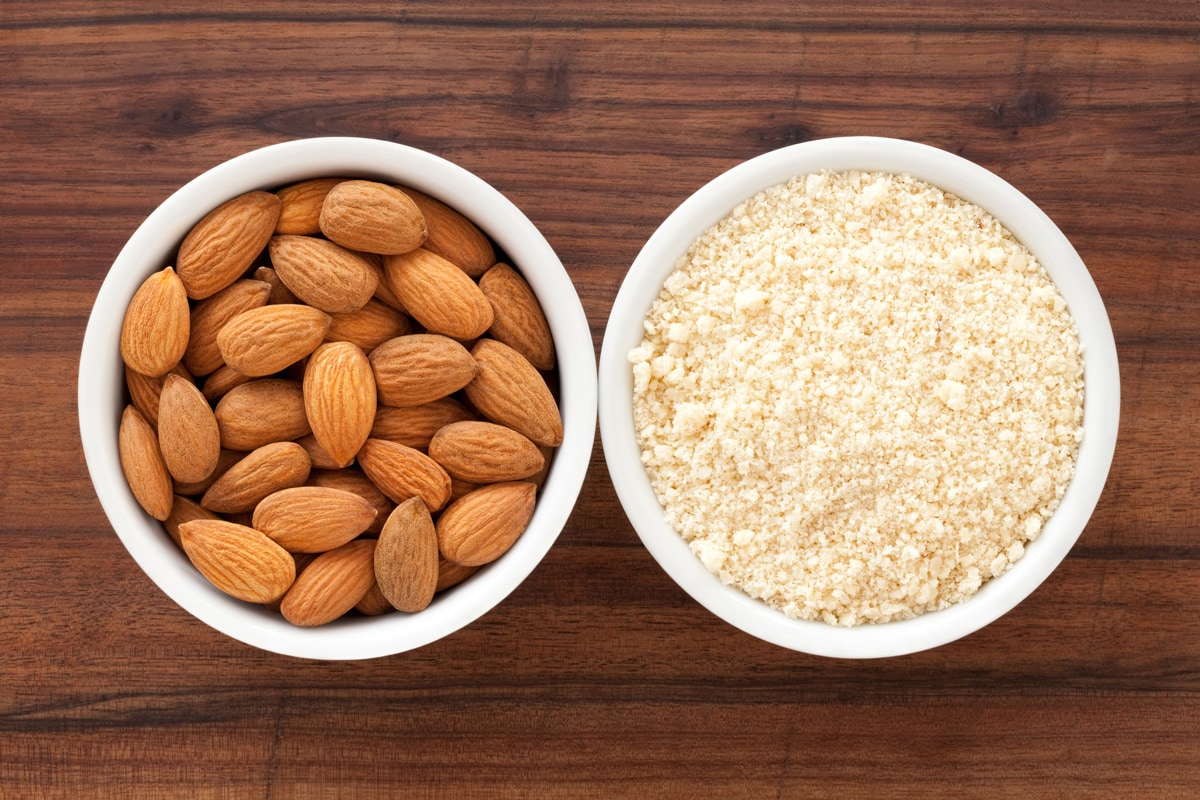
We've seen that you don't need cream of tartar to make macarons, but that's not the only somewhat unique ingredient in this delicacy. Many people don't keep almond flour on hand, so can you make macarons without it?
The short answer is: not really. You can make something like a macaron without almond flour, but macarons have historically been almond-based. However, if you want to omit almond flour because of a nut allergy or any other reason, you can try this recipe from Tasty. It calls for all-purpose flour instead of almond flour.
Can you make almond flour from almonds?
If you don't have access to almond flour, but you do have almonds, you can make your own almond flour at home with a food processor.
First, you'll blanch and peel the almonds. To do so, put the almonds in a heat-safe container and pour boiling water to cover them. Let them sit for ten minutes, then drain them. Next, peel the skin off the almonds.
After blanching and peeling the almonds, let them dry by spreading them out on a baking sheet. You can leave them overnight to dry or you can dry them in the oven at 100º Fahrenheit for an hour.
Once the almonds are dry, put them in a food processor and blitz them until they are as fine as you would like. For macarons, you don't need to get them too fine at this point, since you will blitz them again after combining them with confectioners sugar.
Can you make macarons without eggs?
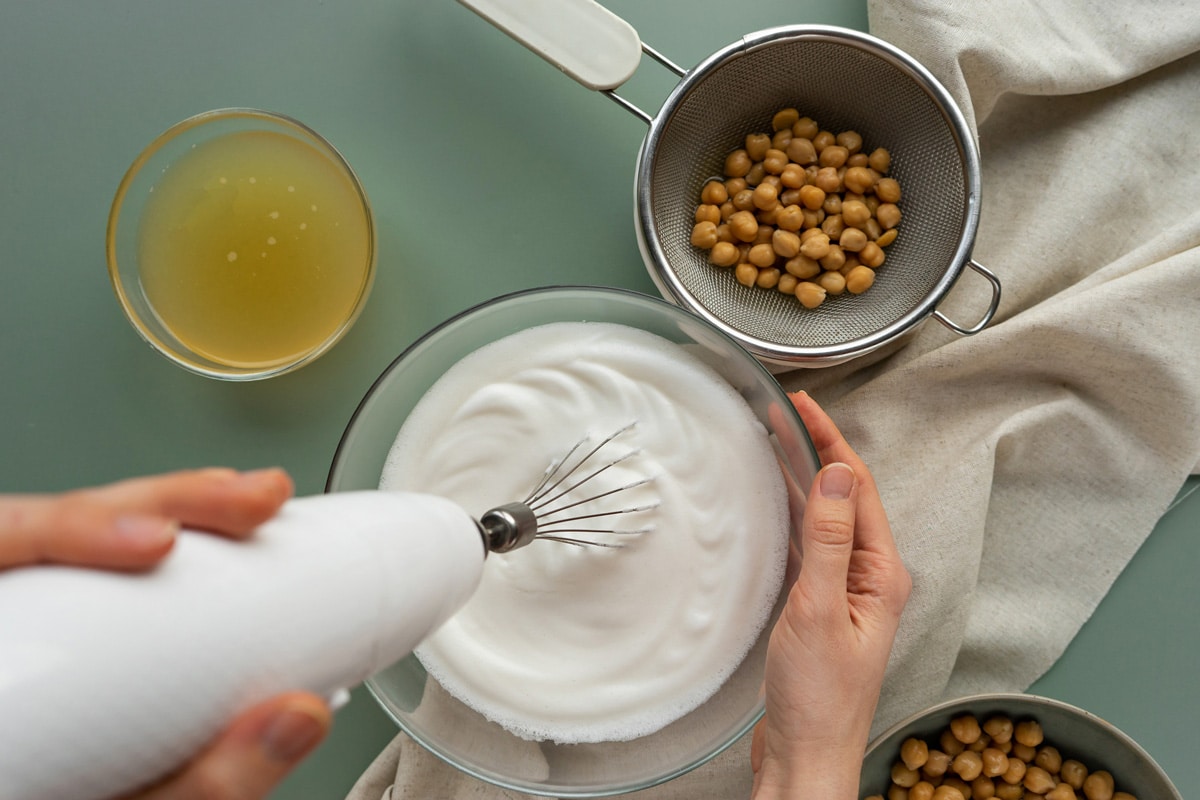
These days, more and more people are trying to reduce the amount of animal products they consume, including eggs. While you might think that it's an impossible task to make a macaron without egg whites, there actually is a way. The secret: aquafaba.
If you haven't heard of aquafaba before, it may sound like some kind of magic elixir. In truth, it's just a fancy name for chickpea cooking liquid. You can use the liquid from canned/ jarred chickpeas or the cooking liquid from making chickpeas at home. This liquid can be whipped up into a meringue much like egg whites.
If you are using aquafaba from canned chickpeas, look for a low-sodium option. You don't want to add in a lot of salt to your macarons or they just won't taste right. If you are using a homemade cooking liquid, you'll have more control over the salt levels, but you may need to reduce it for it to be easily whippable.
The process for making macarons with aquafaba is the same as with egg whites, but it does take longer. To see it happen in action, check out the video below for vegan raspberry macarons:
Final Thoughts
Refined French patisserie has a reputation for being as fussy as it is fancy, and macarons are perhaps the best example of that. Cream of tartar makes homemade macarons an easier task to tackle, but you can still make them without it. You can use lemon juice or vinegar or you can even forego the extra acid altogether.
Now you know how to make macarons with and without cream of tartar, almond flour, or even eggs! Armed with this knowledge, you'll be well on your way to all of that Parisian pleasure right in your own kitchen.
Happy cooking and bon appétit!
If you found this article helpful, check out these interesting and informative posts:
Can You Make Cookies Without Butter?
Do Cookie Jars Keep Cookies Fresh? [Inc. Special Tips]



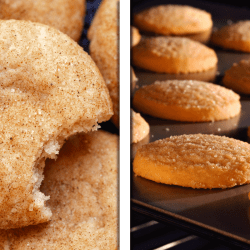

![Bottle of almond milk surrounded by almonds, Can You Leave Almond Milk Out Overnight? [And Does It Expire?]](https://kitchenseer.com/wp-content/uploads/2022/05/A-bottle-of-almond-milk-surrounded-by-almonds-250x250.jpg)
![Close up of hands pouring egg into the bowl of mixer while preparing chocolate cake with poached pears for the holidays, Can You Beat Eggs In A Food Processor? [Here's How To]](https://kitchenseer.com/wp-content/uploads/2021/08/Close-up-of-hands-pouring-egg-into-the-bowl-of-mixer-while-preparing-chocolate-cake-with-poached-pears-for-the-holidays-250x250.jpg)